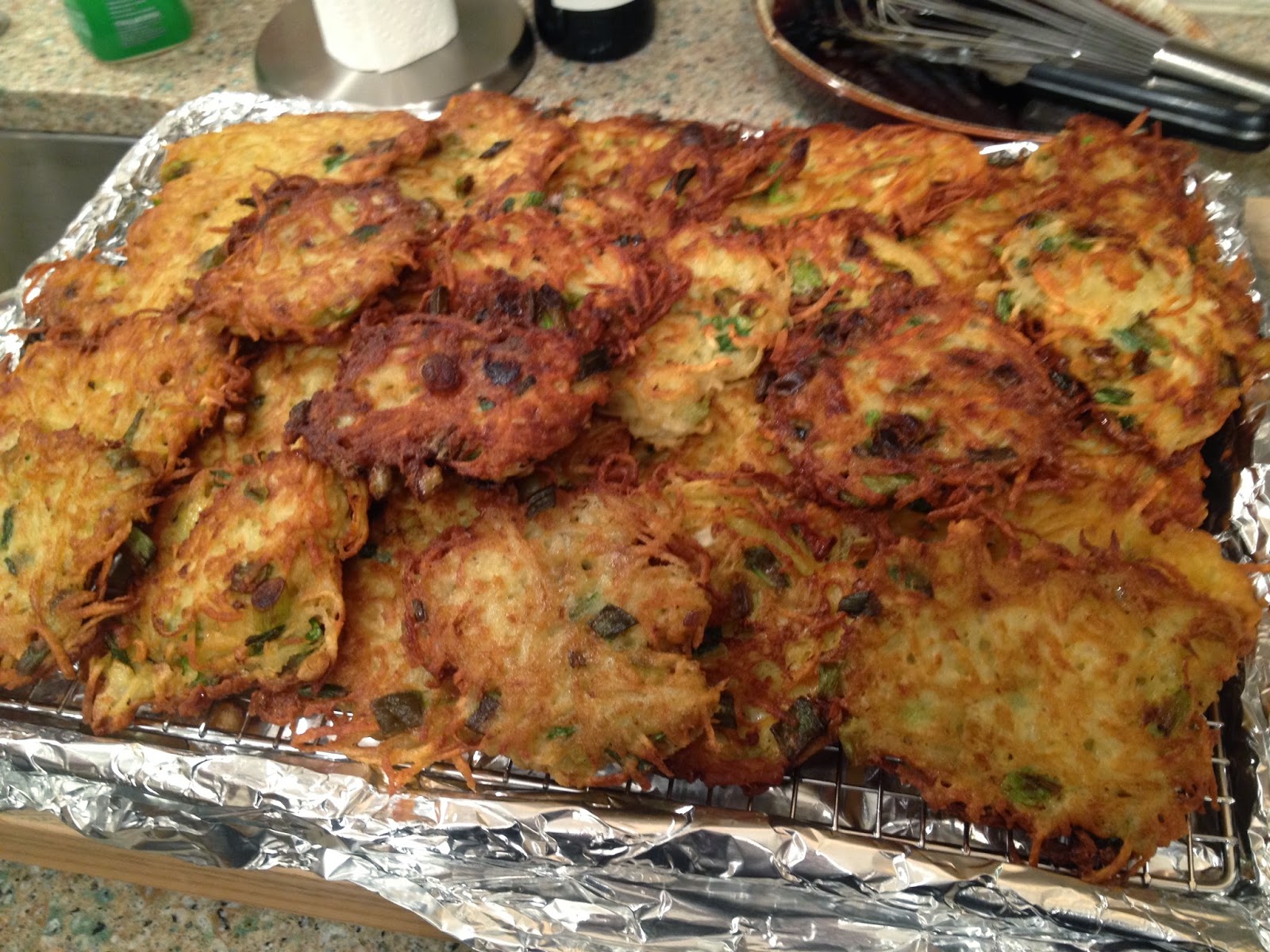First, you need an excellent, preferably home-made sponge cake, though you could
use a store-bought Sara Lee pound cake easily enough. Slice the cake into 1/4-inch slices.
Make a quickie berry jam:
2 lbs
frozen strawberries
1 lb frozen
raspberries
1/4 cup
water
1 cup sugar
Pinch salt
2 tsp
unflavored gelatin, hydrated in 2 Tbp water.
Bring to a simmer,
and cook gently until thickened a bit.
Mash the berries to make more homogeneous if necessary. Add gelatin.
Let cool.
This will not set up
like a “Jello” dessert, but the gelatin will give it a bit more body. It will not be as sweet as a commercial
jarred jam.
Feel free to use any
jarred jam you like, though I am particular to strawberry, raspberry, or apricot
for trifles. I would NOT use Concord grape
jam.
Make a recipe of pastry cream. (There’s really no good substitute for
this. Cooked pudding comes close, but
lacks the richness, as there are no eggs.)
1 qt milk
8 egg yolks
1 1/4 cup sugar
4 Tbp flour
4 Tbp corn starch
2 tsp vanilla
extract
Pinch salt
2 Tbp softened
butter
Scald milk gently
over moderate heat. (You can also do
this in the microwave.) Set aside.
Beat egg yolks with
sugar until smooth. Add flour and corn
starch. Beat until smooth. Add about a 1/2 cup of the warm milk by
dribbles into egg/sugar/flour mixture and beat well until the egg mixture has
been warmed up a bit (this is called “tempering”), then pour the egg/milk
mixture back into the remaining hot milk.
Cook over moderate
heat, stirring constantly, until thickened like pudding. Remove from heat. Add vanilla extract. Beat in butter.
Cover surface with
plastic wrap so that a skin does not form.
Let cool completely before using.
Assemble your trifle in a straight-sided trifle bowl.
Layer sliced cake in
the bottom. Generously dribble rum (or
other alcohol like brandy). Spread cake with jam. Spread some of the pastry cream. Repeat several
times, finishing with pastry cream.
Decorate with whipped cream on top, if desired.














